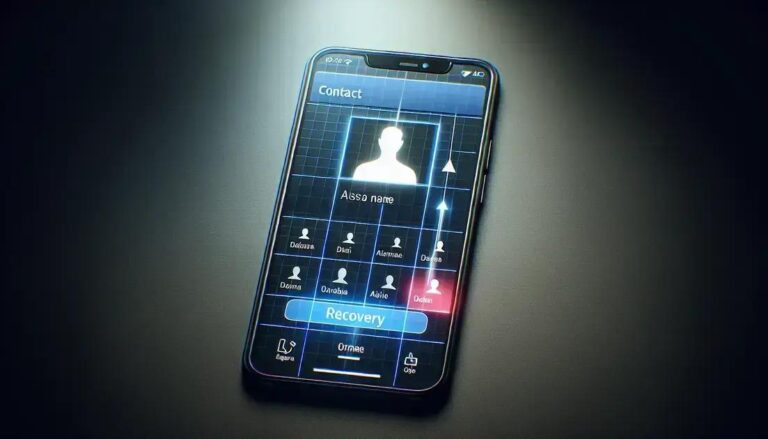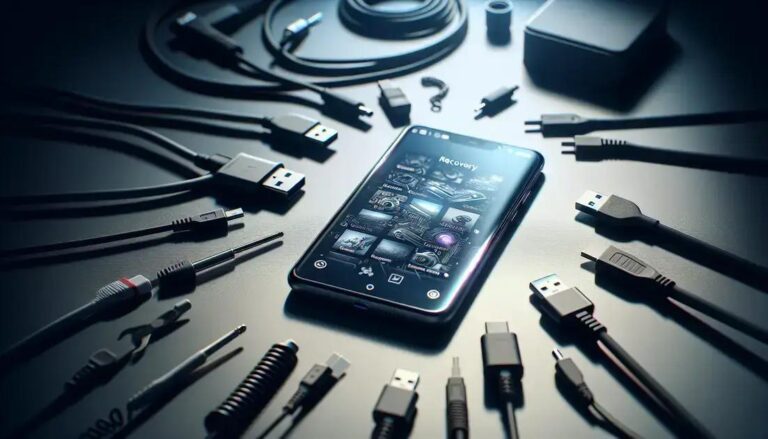Recover Deleted Photos: effective photo recovery methods
Accidentally losing precious memories can feel devastating, but learning to recover deleted photos opens countless possibilities.
Discover proven techniques that help restore your valuable images using modern technology and specialized recovery tools.
Start exploring these effective methods today and unlock the potential to retrieve those irreplaceable digital memories.
Understanding Photo Deletion and Recovery Basics
When you delete photos from your device, they don’t disappear instantly from your storage space, creating opportunities to recover deleted photos successfully.
Your phone or computer marks the deleted file space as available for new data, but the original image remains intact until something overwrites it completely.
This window of opportunity makes photo recovery possible, especially when you act quickly and use the right photo recovery app or restoration method.
Best Photo Recovery Apps for Mobile Devices
Modern smartphones offer various built-in and third-party solutions that can effectively recover deleted photos from your device’s internal storage.
DiskDigger stands out as a powerful photo recovery app that scans both internal memory and external storage without requiring root access on most devices.
PhotoRec provides comprehensive image retrieval software capabilities, while Recuva offers user-friendly interfaces for beginners attempting to restore gallery contents.
Popular Recovery Apps Worth Trying
Several reliable applications specialize in Android photo recovery and can help restore your missing images through different scanning techniques and recovery methods.
- DiskDigger – Free scanning with premium features
- PhotoRec – Open-source comprehensive recovery
- Recuva – User-friendly interface design
- Dr.Fone – Professional-grade recovery suite
- Wondershare – Multi-format image restoration
These deleted files restore applications work by analyzing your storage sectors and identifying recoverable photo data that hasn’t been permanently overwritten.
Computer-Based Photo Recovery Solutions
Desktop image retrieval software often provides more powerful scanning capabilities than mobile apps when you need to recover deleted photos from various devices.
Connect your phone, camera, or SD card to your computer and use specialized photo restore tools that can perform deep scans of your storage media.
Professional recovery software like Photorec, Stellar Photo Recovery, and Disk Drill offer advanced features for complex phone gallery recovery situations.
Connecting Devices for Recovery
Proper connection methods ensure your computer-based digital restore app can access all recoverable data from your mobile device or storage card effectively.
Enable USB debugging on Android devices or use card readers for SD cards to establish stable connections that won’t interrupt the recovery process.
Some advanced device recovery tools require specific drivers or connection protocols to access deeper storage levels where deleted photos might still exist.
SD Card and External Storage Recovery
Memory cards and external storage devices often retain deleted photo data longer than internal phone storage, making SD card image recovery highly successful.
Remove the memory card from your camera or phone immediately after discovering the deletion to prevent new data from overwriting your recover deleted photos attempts.
Use dedicated card readers connected to computers running specialized recovery software for the best chances of successful gallery image recovery from external media.
Memory Card Recovery Tips
Following proper procedures maximizes your chances of successful recovery while minimizing the risk of permanent data loss during the restoration process.
- Stop using the card immediately after deletion
- Use quality card readers for stable connections
- Scan entire card sectors thoroughly
- Save recovered files to different storage
Professional camera roll backup strategies can prevent future losses, but immediate action remains crucial when attempting to restore recently deleted images.
Backup and Cloud-Based Photo Recovery
Cloud storage services automatically sync your photos, creating multiple opportunities to recover deleted photos through backup photo recovery methods.
Google Photos, iCloud, OneDrive, and Dropbox maintain deleted photo folders where your images remain accessible for specific time periods before permanent deletion.
Check your cloud service’s recently deleted or trash folders, as most platforms keep deleted items for 30-60 days before final removal.
Cloud Service Recovery Steps
Each major cloud platform offers slightly different procedures for accessing and restoring photos from their backup systems and deleted item folders.
Google Photos users can access the trash folder through the app or web interface, while iCloud users should check the Recently Deleted album.
Dropbox and OneDrive maintain deleted file histories that allow users to restore images deleted within their retention periods using web-based interfaces.
Prevention Strategies and Best Practices
Implementing proper backup strategies reduces your reliance on emergency recovery methods and ensures you can easily recover deleted photos when needed.
Set up automatic cloud syncing, maintain regular local backups, and consider using multiple storage methods to protect your most valuable digital memories.
Modern devices offer various built-in protection features, but understanding how to use deleted pics apps and recovery tools remains essential for comprehensive protection.
Backup Strategy Recommendations
Effective photo protection requires multiple backup layers and regular maintenance to ensure your recovery options remain current and accessible when needed.
- Enable automatic cloud synchronization
- Maintain regular computer backups
- Use multiple cloud services for redundancy
- Keep local copies of important photos
- Test your backup systems periodically
These image restore tips help create comprehensive protection systems that make emergency recovery situations less stressful and more likely to succeed.
Advanced Recovery Techniques and Professional Help
When standard methods fail, professional data recovery services can attempt to recover deleted photos using specialized equipment and advanced techniques.
Physical damage to storage devices or severe data corruption might require laboratory-grade recovery processes that exceed typical consumer software capabilities.
Professional services cost significantly more than DIY solutions, but they offer higher success rates for challenging recovery situations involving damaged storage media.
When to Seek Professional Help
Certain situations warrant professional intervention, especially when dealing with irreplaceable photos or valuable commercial image collections that standard recovery methods cannot restore.
Water damage, physical storage device failures, or severe corruption might require specialized clean room environments and professional-grade equipment for successful recovery.
Consider professional services when dealing with business-critical images, family heirlooms, or situations where standard gallery image recovery methods have failed completely.
Conclusion
Successfully learning to recover deleted photos requires understanding various recovery methods, from simple cloud restoration to advanced professional techniques.
Quick action, proper tools, and systematic approaches significantly increase your chances of retrieving those precious memories you thought were lost forever.
Implement preventive backup strategies while maintaining knowledge of recovery techniques to protect your digital photo collections from future losses.
Frequently Asked Questions
How quickly should I attempt photo recovery after deletion?
Start recovery attempts immediately, as continued device use overwrites deleted photo data and reduces successful recovery chances significantly.
Can I recover photos deleted months ago from my phone?
Recovery success decreases over time, but backup photo recovery through cloud services might still work if automatic syncing was enabled previously.
Do free photo recovery apps work as well as paid versions?
Free apps often provide basic recovery capabilities, while paid versions offer advanced features, better success rates, and comprehensive customer support options.
What’s the difference between quick scan and deep scan recovery?
Quick scans find recently deleted files faster, while deep scans examine entire storage sectors thoroughly for older or heavily fragmented photo data.
Can water-damaged phones still have recoverable photos?
Professional recovery services might retrieve photos from water-damaged devices, but success depends on damage extent and how quickly professional help is sought.






